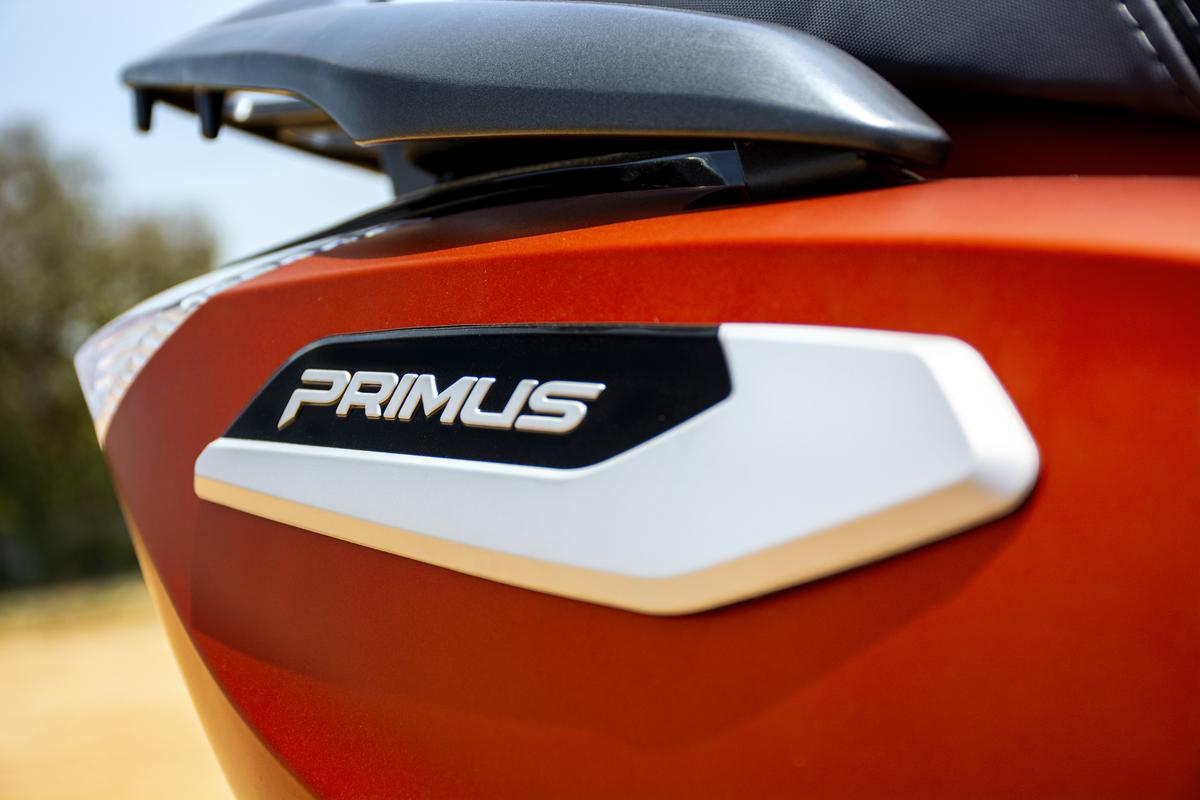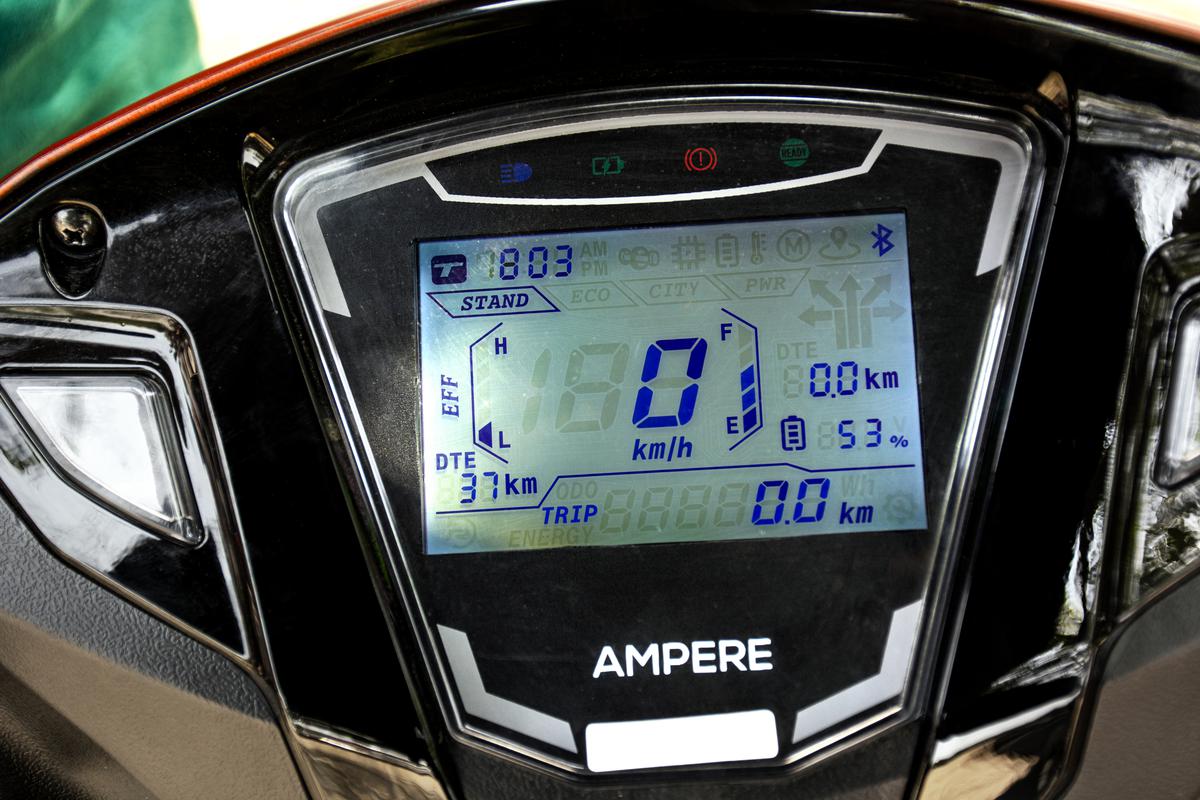Ampere is one of the bigger players in the ocean of EV “start-ups” in India that has been selling e-scooters designed and developed overseas. In 2018, the company was acquired by Greaves Cotton Ltd, and while Greaves does not have any prior experience with electric mobility, it does have a vast and diverse engineering background. That factor is comes into play with the launch of the new Primus — the company’s first truly indigenous, made-in-India, made-for-India offering. We present a brief spin on the e-scooter.

Within the Ampere line-up, the Primus sits at the very top — priced at ₹1.10 lakh (ex-showroom, India, except North Eastern states). And in the e-scooter market it is a little below the base variant of the TVS iQube (in most cities; but in some others, the iQube is cheaper), and is on par with the Ola S1 Air in its most expensive, 4kWh guise.
A quick look at the spec sheet reveals some similarities to iQube. There is a 4kW mid-mounted motor here that delivers a claimed 0-40kph time of 4.2sec and a claimed top speed of 77kph — both figures are virtually identical to the TVS. In the real world, though, the similarities are not so strong. The Primus does not have the zip that you would expect from a 4kW e-scooter. Right from the off, it does not feel as peppy as an iQube, and acceleration trails off quite significantly above 40kph.
That said, it does continue steadily gaining speed and will eventually cross a speedo-indicated 80kph. So overall performance levels are adequate for everyday city commutes. But you will not be entertained by the performance either.
Giving the Primus its go-juice is a 3kWh LFP battery — this is a chemistry that offers safer thermal characteristics but slightly lower energy density than its more widespread NMC counterpart. It is a non-removable unit housed under the seat, and offers an ARAI-certified range of 107km, though you probably will not get that much in real-world conditions. We spent most of the day riding in the highest ‘Power’ mode, and the scooter seemed on course to cover somewhere between 70km and 80km on a full charge. Once dead, Ampere says a full top-up will take about five hours, while an optional fast charger (price not announced yet) will cut this down by roughly half.
We did notice that the SOC indicator is not the most accurate or reliable unit around. It only dropped 1% from 100% after the first 10km of riding, and then dropped a further 15% over the next 10km, so there is clearly still some work to be done in this area. The DTE readout also fluctuates by huge amounts quickly depending on the riding style at any given moment, and this does not inspire confidence.

There were issues with the small, Bluetooth-enabled LCD panel as well. Aside from the fact that it is dim and difficult to read in sunlight, the single trip meter cannot be reset manually, and instead automatically resets every time the scooter is left off for a little while. Strangely, the clock seems to reset like this as well, and it is not possible to manually toggle between the odometer and trip meter on the screen (when you turn on the scooter you see the odo, and once you start moving it changes to the trip meter).
Being 5’8 in height, I felt the riding position to be a little knees-up on the Primus. That aside, there is a reasonable amount of space for both rider and pillion, and the floorboard is roomy too. Underseat storage space is decent, at 22 litres. The compartment is wide and fairly long, but like numerous other EVs, it is not deep, so it will not fit a helmet. There is also a fairly large cubby on the back of the apron, with a USB charger. Other features include an LED headlight, Bluetooth connectivity, three riding modes, and reverse.
Fit levels across the scooter are decent, but there are a number of other ways in which the Primus feels built to a cost. Material is not up to the mark for something that costs over ₹1 lakh, and a front drum brake is a little surprising at this price point. The rest of the chassis package is fairly decent, with 12-inch wheels at both ends. Ride quality strikes a nice middle ground — not as soft as an iQube nor is it as stiff as an Ather. It feels sure-footed around corners, while still keeping you comfortable over bad patches of road. The weak drum brakes, however, really hold you back from upping the pace and having fun on board this scooter.

The Ampere Primus is a bit of a strange scooter to sum up. At ₹1.10 lakh, it certainly is not cheap in absolute terms; you could get a far more capable and better equipped petrol scooter for less money. In the electric space, it is affordable than most of the established premium e-scooters around, but not by much. If a cost-effective, basic and simple e-scooter is what you are looking for, the Primus could be worth considering and the LFP battery does have its appeal. For most people, though, the extra ₹8,000 that the base TVS iQube demands (in Mumbai), is worth paying. The stronger performance, better seating comfort and front disc brake on their own would justify that premium, but you also get a neat TFT display, better build and a strong reputation.
Stay connected with us on social media platform for instant update click here to join our Twitter, & Facebook
We are now on Telegram. Click here to join our channel (@TechiUpdate) and stay updated with the latest Technology headlines.
For all the latest Life Style News Click Here
For the latest news and updates, follow us on Google News.
